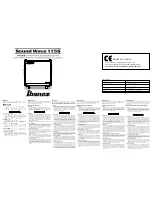
4 AKD EtherNet/IP Features
4.1 Supported Features
AKD follows the ODVA standard for EtherNet/IP. It provides necessary standard objects, as well as certain
vendor-specific objects. CIP-Motion (for real-time multi-axis synchronized motion control) is not supported.
The following general drive features are supported through EtherNet/IP:
l
Drive setup and configuration
l
A full range of drive parameters can be accessed
l
Configure parameters through user programs
l
Setup motion tasks
l
Position Control
l
Setup and trigger homing
l
Point to point moves
l
Absolute and relative motion
l
Configure and execute motion task sequences
l
Velocity Control
l
Initiate jog moves
l
Torque Control
l
Write torque commands
l
Read actual torque
l
Status and actual values
l
Monitor drive status (enabled, faulted, homed, in position, in motion, etc) on every cycle
l
Monitor actual position and velocity on every cycle
l
Monitor any drive value using explicit messaging on-demand
4.2 Expected Packet Rate
The Expected Packet Rate (EPR) is also called the Requested Packet Interval (RPI).
The fastest supported cyclic rate for EtherNet/IP on AKD is 10 milliseconds. For simultaneous operation of
Workbench and an EtherNet/IP controller communicating with an AKD, the cycle rate should be reduced to
20 milliseconds.
4.3 Connection Port
The EtherNet/IP network connection port with the AKD is the same RJ45 connector used for the Telnet. This
port is numbered as X11 on the AKD side panel.
4.4 Network Topology
AKD can be connected on an EtherNet/IP network in two manners:
l
As the last node in the network (since AKD has only one connector) in a line topology
l
As another node on the network in star topology (using a switch)
Ethernet/IP Communications | 4 AKD EtherNet/IP Features
Kollmorgen | December 2014
7








































